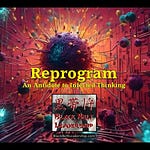If you’ve ever played a team sport, you’re familiar with the pre-season ritual of two-a-days. I remember starting two-a-days when I first started playing football in junior high. Our coaches scheduled both an early morning session and a late afternoon session, four (and sometimes five) days a week.
In sports, two-a-days are used to accomplish three primary goals. First, to get the athletes in peak physical shape for the season. Secondly, it’s a time to practice and hone new skills and strategies while learning the offensive and defensive sets. Lastly, it is an opportunity to build camaraderie and rapport as the individual players come together as a cohesive unit and learn to play together as one.
Two-a-days help the players to achieve faster results in areas like strength, speed, and conditioning. They also help the players improve their mental toughness and focus. Coaches like the two-a-day schedule as they can see how the players are performing and internalizing the playsets.
Overtraining is a concern, so coaches alter the sessions to avoid undue fatigue and injury. Coaches also monitor the health of the players, assuring they are getting adequate time to rest and recover between sessions so they can continue to maximize their gains. Great coaches also incorporate some fun elements into two-a-days to prevent burnout, keep the players engaged, and disguise the work they are demanding of the players.
Two-a-days facilitate four positive outcomes that every successful coach craves. It accelerates the process of getting the players in shape and helps them to hone their craft and learn how to play as a cohesive unit. Even more important, coaches tell me that two-a-days reveal the commitment level of a player as well as his or her resolve.
The two-a-day regimen also serves as a filtering process for the coaches. For the players, two-a-days serve as the audition stage for greatness. It reveals to the coaches who wants to be a starter, who simply wants to get in the game, and who is okay with being a benchwarmer.
It’s the player’s opportunity to show up, show out, get noticed, and get selected.
It’s the player’s opportunity to shine!
Kobe Bryant understood this. His workout ethic was impeccable, and his training regimen outside of regularly scheduled team sessions (even in the off-season) validated his commitment to daily, continual improvement. Up before sunrise, he trained for two hours. After a short break, back on the court for another two hours of training before lunch. A third two-hour workout in the afternoon and a final two-hour session before bed.
In a YouTube interview several years ago, Kobe was asked about this. He talked about his intense workout regimen and the advantage it afforded him over his peers. He then noted:
“You do that and as the years go on, the separation that you have with your competitors and peers just grows larger and larger…and by year 5 or 6 it doesn’t matter what kind of work they do in the summer, they’re never gonna catch up.” Kobe Bryant ~ Start Earlier (YouTube)
Kobe understood that unspectacular preparation precedes any spectacular performance. He understood the wisdom espoused by Henry Ford when it comes to preparation:
“Before everything else, getting ready is the secret of success.”
Ask Tiger Woods, Michael Phelps, Simone Biles, Tom Brady, LeBron James, or any world-class athlete, and they will tell you the same thing. Preparation precedes performance.
What’s the benefit of Two-A-Days? Why is training camp SO important to success?
Let me share six important reasons.
First, it’s an opportunity for the players to learn the strategies and tactics that create winning moments on the field of play. Players get to learn and rehearse the offensive sets that put them in a position to score, as well as the defensive sets to stymie their opponent’s momentum. They get to prepare to perform and refine that to muscle memory.
Secondly, it’s an opportunity for the players to learn about their competition. In competitive play, understanding the strengths and weaknesses of your opponent can help to identify, rehearse, and hone the strategies and tactics to neutralize their strengths and exploit their vulnerabilities. Again, preparing to perform before its game time.
Thirdly, it’s an opportunity for the individual players to learn how to interact and work with their fellow teammates so they perform as a cohesive unit on the field. When each player on the team knows how his or her teammates are going to contribute to the team’s success, they can play their own position with more confidence.
Fourth, it’s in these times of preparation that the players learn how to win and lose as a team. During the pre-season, scrimmages are common. A scrimmage is a mock game where the players compete against each other to demonstrate how well they have internalized the offensive and defensive sets, but also for bragging rights.
It’s also where the players get an opportunity to learn from mistakes made and to own those mistakes as a team. Individuals don’t win team sports; teams do. Learning to win and lose as a team is a sign of maturity, recognizing that victory and defeat are shared experiences. Great teams learn from losses, apply what they’ve learned, and get back on the field.
Fifth, two-a-days serve as the audition stage for players to get the attention of the coaches. In football, there are only 11 players on the field at a given time. In baseball, there are nine. In basketball, there are five. Out of all the players who show up at the beginning of pre-season, the coaches are looking to see which players are demonstrating the individual talent, as well as the collaborative skills to work together as part of a cohesive team.
It’s an opportunity for players to show up, show out, get noticed, and get selected.
Sixth, two-a-days also serve as leadership learning laboratories. Coaches are looking for players who can not only lead themselves well but also lead others. Training camp exposes players to intense pressure, which fosters teamwork and develops resilience. The rigorous schedule of two-a-days forces players to develop strong communication skills, learn to adapt to changing situations, and push through physical and mental fatigue – all while maintaining a positive attitude and supporting their teammates.
Every great sports team not only has exceptional players, but strong leadership that rallies the team, keeps them focused on the task at hand, and mutually holds one another accountable. Coaches are looking for well-respected players who are dedicated to the welfare and well-being of the team and can inspire them to rise to greatness.
Once more preparation precedes performance.
In business, leaders are coaches. It’s their responsibility to recruit the talent, train the team, pick the starters, provide them with a playbook for success, and call the plays. The team members are the players, each bringing their own unique giftedness to the team, but have to also learn how to work as part of a collaborative, cooperative, cohesive unit.
The six benefits of two-a-days also apply to creating world-class, high-performance teams.
First, it’s about mastering the playbook. In sports, players need to know the playbook. In business, team members must clearly understand organizational goals, their individual responsibilities, and how their work contributes to the bigger picture. Onboarding, training, and transparent communication are the organizational equivalents of learning the plays.
Second, it’s about learning to play as a team. No one wins alone. High-performing teams are built on trust, accountability, and shared success. Like athletes practicing together to build timing and chemistry, professionals must engage in regular collaboration to break down silos and work as a cohesive unit.
Third, it’s about understanding the competition. Just as athletes study opponents, organizational teams must be aware of their competitive landscape. High-performance teams analyze trends, study competitors, and adapt strategies to get ahead and stay ahead. This mindset encourages agility and a proactive approach to challenges.
Fourth, it’s about learning to win and lose as a team, creating a sense of shared ownership. In sports, victory and defeat are shared. In organizations, wins should be celebrated collectively, and setbacks should be debriefed together. High-performance teams take ownership of outcomes, learn from failure, and use every experience to grow stronger.
Fifth, it’s about gaining visibility and recognition. Players aim to impress coaches — team members aim to add value that gets noticed. High-performance cultures empower employees to take initiative, innovate, and contribute visibly to the team’s mission, thereby earning trust, mentorship, and leadership opportunities.
Sixth, it’s about identifying, equipping, and empowering future leaders and giving them opportunities to lead. Training camp is where future captains emerge. Within organizations, stretch assignments, cross-functional projects, and mentoring create a "leadership lab" — a space to develop decision-making, emotional intelligence, and influence. A high-performance team is also a leadership incubator.
In business, as in sports, preparation precedes performance.
But what happens when preparation is overlooked, ignored, or devalued?
If players don’t show up for two-a-days, they don’t get in shape, so they’re not prepared to perform when it’s game time. They don’t hone their craft, so they aren’t prepared to perform when it’s game time. They fail to demonstrate their commitment to their coaches and teammates, showing themselves to be undisciplined and untrustworthy. Lastly, they don’t get seen and recognized by their peers and coaches. They miss the opportunity to showcase their talent and ability, and the curtain closes before they can audition for the stage.
They’ve (at best) earned the right to sit on the bench, but in all likelihood, they won’t even be invited to suit out with the team because they failed to prepare.
The same is true in business.
Preparation precedes performance.
Many people dream of being the Kobe Bryant of their business, but they are unwilling to do what Kobe did in preparation to get to do what Kobe got to do when it was time to perform.
Ask Tiger Woods, Michael Phelps, Simone Biles, Tom Brady, LeBron James, or any world-class athlete, and they will tell you the same thing. Preparation precedes performance.
Ask the team members of any world-class, high-performance organization and they will also tell you that unspectacular preparation precedes any spectacular performance.
Do you want to be a starter?
Do you want to get in the game?
Do you want to be a benchwarmer?
You will do what is required to be one of these three.
Preparation precedes performance.
Successful people do daily what unsuccessful people do sometimes, or not at all.
How much success do you want to experience, and what are you willing to do (in terms of daily preparation) so you can perform and experience it?
Are you willing to prepare so you can perform?












Share this post